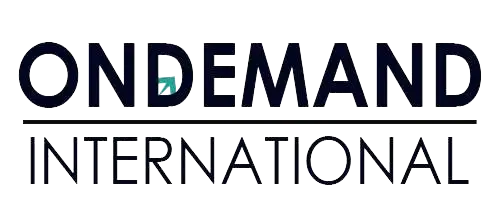
Singapore will raise the Central Provident Fund (CPF) contribution rates for workers aged 55 to 70 from January 1, 2024.
The hike was scheduled to take effect in January 2024 but was postponed to 2024 to provide employers time to control overhead expenses during the pandemic. However, CPF contributions will have raised from 1.5% to 2% of total salaries as of January 2024.
The CPF is a required, employment-based social security savings program funded by employer and employee contributions.
In this article, we will discuss the Singapore CPF contribution rates in more depth and how they will impact employers’ overall situation.
What Does CPF Mean And Why Is It Necessary To Pay?
The Central Provident Fund is a type of public security saving technique that is financed by donations via employees and employers. The sole purpose of CPF contribution is to assist the employees in meeting their various needs. For example, their medical costs, housing loans, and also their retirement.
The CPF Contribution is made by individuals who represent Singapore Citizens (SCs) and Singapore permanent residents (SPRs). But these individuals should be:
- Hired under a service contract in Singapore
- Or Recruited on a casual/part-time or permanent basis
- Making more than $50 per month
The compulsion of CPF contribution does not apply to someone who is a citizen of Singapore or an SPR but is working abroad. Now, if you are wondering where does this contribution go, here is your answer:
4 accounts, where the contribution gets deposited, are;
- Special Account: For employee retirement purposes
- Ordinary Account: For employee retirement and home loans
- Medisave Account: For employee medical needs
- Retirement Account: For a pension payment each month (55 years and older)
How Does CPF Contribution Work?
Employees can deposit up to 20% of their pay to their CPF funds. They also eventually gain to 17 percent of their earnings in CPF payments from their employers. That’s how businesses in Singapore contribute to the creation of a welfare program for Singapore employees in their golden years.
Companies are also responsible for paying both the company’s and the worker’s CPF contributions. Employers must deduct the worker’s portion of CPF deposits from the month’s income before disbursing it.
Singapore CPF Contribution Rates For 2022
As per the new norms of CPF contribution rate 2022, now the companies will be required to make additional CPF payments for their senior workers. Employee CPF contribution will have to be increased for experienced employees as well. Companies will be given a CPF Offset Transition package, which will cover half of their added expenses.
Singapore-based businesses can potentially contribute 17% of their worker monthly wage to their CPF funds. This varies according to an individual’s age. The remuneration that is subject to CPF payments is likewise limited to the first $6,000 of their monthly income.
Although the company’s CPF payments are similar, employee CPF donations differ for those making $750 or maybe more, those making more than $50 to $500, as well as those making more than $500 to $750. For improved understanding, we have highlighted the data in the charts below.
According to the CPF contribution rate 2024, 2 people earning the same wage can get varying CPF deposits dependent on their seniority. Both the company’s and the worker’s CPF deposits decrease with age.
Senior workers are less expensive for companies due to reduced CPF contribution rate, gaining a competitive advantage in the employment market. Simultaneously, decreased employee CPF deposits encourage older workers to take away a larger portion of their pay in cash.
Irrespective of what a worker makes, the company’s CPF contribution stays constant. Employee CPF payments vary, with those earning less than $500 paying little and those earning more than $500 but less than $750 giving a lesser amount. This is to assist low-wage employees in increasing their take-home money.
Workers earning less than $50 per month are exempt from both company and employee CPF contributions. Employers are required to pay CPF payments on an individual’s Additional Wage (AW) in supplement to CPF contribution on the employee’s monthly Ordinary Wage (OW).
Ordinary Wage (OW) Cap – OW only pertains to the earnings that workers receive in exchange for their monthly labor.
Additional Wage (AW) Cap – This is the pay provided to workers at more than a month’s duration.
Is it obligatory for businesses to make CPF donations?
Singapore CPF contribution is a mandatory state welfare investment program to which both the firm and the workers working there contribute. The deposit made by both parties goes toward the worker’s medical, accommodation, and retiring expenses. Every individual who is either an SC or is a legal resident working under an independent contractor or in part-time or economic growth must make a monthly Singapore CPF contribution.
Deposits to the Singapore CPF for Overseas Workers
CPF contribution rate applies to Singapore Permanent Residents for the first two years after attaining SPR status. Companies in Singapore aren’t required to make CPF donations for their overseas employees unless they achieve SPR accreditation. During the first 2 years after obtaining SPR certification, the employer and employee spend a lesser rate termed as the graduated employer-graduated employee contribution rate and then participate at standard prices beginning in the 3rd year.
Deposits to the CPF for Permanent Residents (PRs)
Workers who are Permanent Residents make the same CPF obligation as Singaporeans. The main distinction is that during the first 2 years after obtaining PR designation, both workers and employers offer a reduced CPF contribution. No increased contribution rates are seen for PR staff aged 65 and up.
PRs earning less than $50, like Singaporeans, do not get any CPF obligations, but those earning between $50 and $750 get the same business’s CPF payments but reduced employee CPF contribution.
Companies have the potential of choosing a full CPF contribution rate for PR staff if they so desire. When a PR worker reaches his or her the third year, he or she must pay full CPF payments, just like a Singapore Citizen worker.
When Do Companies Charge CPF Donations For Their Workers?
Singapore CPF contribution is payable on the final day of the full month. Companies, on the other hand, have till the 14th of the next month to make a deposit (or the next business day if somehow the 14th occurs on a weekend or a Public Holiday). Inability to do so could result in enforcement proceedings, such as a delayed payments penalty at 1.5 percent every month (a minimum of $5) starting from the specified deadline.
As specified, the due date will remain the 14th of every month, but the employees who won’t be able to submit the payment on time will have their interest charged from the 1st of the month. Say, for instance, you pay your CPF deposit on the 16th of that month, then it will be your responsibility to pay the 1.5% interest for all the 16 days you were late.
How to Determine CPF for Singapore Permanent Residents and Singapore Citizens?
Here is a full explanation of how the aforementioned situation is computed with Additional Wage and the result for both Company CPF and Worker CPF contribution.
The given table refers to non-pensionable workers in the public and private sectors who are either a Singapore Citizen (SC) or a Singapore Permanent Resident (SPR) from the 3rd year of acquiring residence permit, or a Singapore Permanent Resident in the 1st 2 years of acquiring residence permit but who have jointly adhered with the company to contribute to the full worker- company prices.
How to Calculate CPF Contribution Using the Table Above
- Calculate CPF contribution and measure to the closest amount. (For instance, $0.5 must be treated as an extra $1.)
- Determine the worker’s CPF contribution
- This method is used to determine the company’s share = Total Contribution – Employee Contribution
How to Compute CPF for Singapore Permanent Residents Who Received Residence Permit Less Than 2 Years Ago?
Companies in Singapore are not ordered to contribute CPF for their international employees. Nonetheless, after an overseas employee achieves Singapore Permanent Residency, the organization must pay their CPF installments. Within the first 2 years after gaining Singapore Residency, CPF payments are due at cheaper costs.
For this situation, there are 2 types of CPF contribution rates:
- Employee and employer rates that are partially graduated
- Rates for Full Corporate and Temporary Employees
The table shows the CPF contribution rates for a Singapore Permanent Resident during his or her first year of SPR registration.
How to Determine CPF Contribution Using the Table At The Top
- Calculate CPF contribution and bring it down to the closest dollar figure. (For instance, $0.5 should be treated as an extra $1.)
- Determine the company’s CPF contribution (drop the dollar decimal values)
This method is used to determine the company’s share = Total Contribution – Employee Contribution
Conclusion
In this article about CPF Contribution, we discussed the basic need of CPF and its importance in the lives of Singaporean citizens and permanent residents. Another important topic that was covered in this article was the change in the CPF Contribution rate 2024. This change came into implementation from 1st January. Further, you will learn about the computation technique behind CPF contribution, for the Singapore citizens, for the Singapore Permanent Residents, and for the people who got their residential permit less than 2 years ago. I hope all these details gave you clarity and this article got successful in becoming your “Ultimate Guide”.
FAQ’s
Freelance, casual, or transient employees must pay CPF obligations if they are:
Singapore citizens (SC) or permanent residents (SPRs) who are employed underneath a service agreement and receive a monthly salary of $50 or more.
Share capital amount around PLN 50,000 is necessary to form a company, and it is also crucial to have NIP or REGON also including the register of VAT payment.
The Ordinary Wage (OW) ceiling blocks the flow of OW that can be used to qualify for CPF obligations in a full month. Presently, the OW ceiling is set at $6,000 per year.
If you are of the age 55 or older, abide by the steps given below to determine approximately how much you can take from your CPF funds:
- Utilize your Singpass, access Retirement Portal
- Browse the section titled “Withdraw for immediate retirement needs.”
The quantity you can receive is determined by the value in your CPF acct as well as the year you were born in.
Companies must cover all overdue CPF contributions. If CPF contributions are not paid on time or are not paid at all, the CPF will issue a written letter to the company by certified post warning them that judicial action would be taken.
Foreclosing businesses may be liable to delayed payment interests (at to $5) and a compositional amount. Businesses that continue to fail to compensate will be prosecuted. The prosecution will require them to recover the CPF installments, penalties, and a civil fine, and/or they will be convicted and sentenced.
If businesses continue to fail to pay, an order will be filed to confiscate and liquidate the assets of the employers. As a last option, insolvency or closing down processes may be initiated. Employers who are convicted of delayed fees face penalties.

